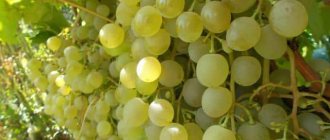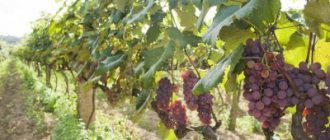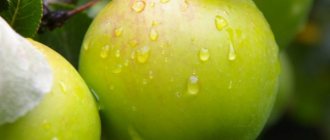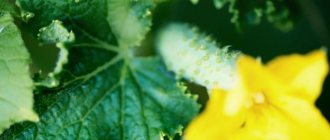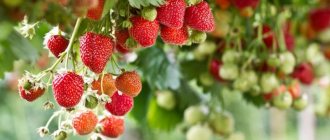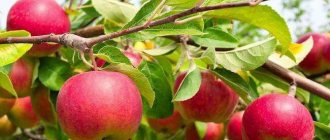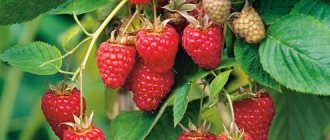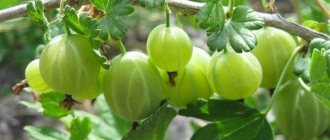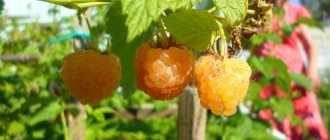Characteristics of the Raspberry Ridge variety
- Remontant plants with medium ripening periods, large, oblong, dark red shades, fruits of 5 - 8 g. They have a sugar content of 7.5%.
- The originators stated that it is possible to collect from 15 to 16 tons from 1 hectare.
- Plants with medium height, spreading and shoot-producing properties.
- Annual bushes with large dark green leaves, medium flowers, light brown. They have sparse and small spines.
- The fruits are used in various preparations and freezing.
- The culture withstands the first frost and long-term transportation.
The nursery offers the following varieties of remontant raspberries:
Raspberry Ridge
bush 1.3-1.5 m high; the variety is disease-resistant and pest-resistant; The berries are large in size, have a conical shape and a beautiful glossy shine; the weight of one berry is 12-14 grams; In terms of taste, the berry is very sweet, juicy, and has a dense structure. A distinctive feature of the Raspberry Ridge variety is the uniform yield of the crop, since the ripening of the crop occurs almost simultaneously. By the second half of September, 100% of the berries are ripe. However, it is worth noting that raspberries continue to bear fruit on late shoots, which makes it possible to pick berries at a later date if the weather is good.
The photo shows the remontant raspberry variety Raspberry Ridge
raspberry variety "Raspberry Ridge"
berry size "Raspberry Ridge"
Samokhval
was bred by crossing the favorite varieties Karamelka and Nizhegorodets. The fruits of this variety are large, weighing 15-18 g, taste sweet, on a tasting scale the taste is rated 4.5 points. The height of the bushes is 1.3 – 1.5 m. The size of the bush resembles the Nizhny Novgorod variety. The difference is that Samokhval is a more upright variety and its berries are much sweeter, denser and more transportable.
in the photo are remontant raspberries of the Samokhval variety
Praise
raspberry variety with large fruits, weighing up to 20 grams. The height of the plant is about 1.5 m. The fruits are elongated and have a beautiful shiny gloss. The variety is resistant to anthracnose and rust. The good thing about this variety is that the harvested products can be transported over long distances due to the high density of the berries. The taste is good.
The photo shows the remontant raspberry variety Pokhvalinka
The Little Humpbacked Horse
refers to the earliest remontant raspberry varieties. The first berries can be picked already in mid-July (earlier than the famous early ripening variety Penguin). Bush height up to 1 m. The berries are oval in shape and large in size, weighing 12 g each, and taste very sweet. This variety can be grown in all regions of Central and Southern Russia. It is especially recommended for cultivation in regions with short and cold summers: the northern regions of the Kirov and Sverdlovsk regions, in the Perm Territory.
The photo shows the remontant raspberry variety Konek-Gorbunok
Caramel
a proven and well-proven variety of remontant raspberries. It is distinguished by the sweetest berries of all remontant varieties.
Advantages and disadvantages of the raspberry variety Raspberry Ridge
The advantages of plants are:
- In the simultaneous ripening of fruits, and in large quantities. Therefore, you can make winter preparations or arrange sales.
- Intensive growth and production of new strong shoots. You can get seedlings without buying seedlings from nurseries.
- Not frequent treatment with fungicidal and insecticidal substances. Resistance to raspberry standard diseases, because autumn pruning destroys all harmful organisms.
- Excellent berry taste and aroma, abundant fruiting, beautiful commercial appearance.
- Possibility of transporting crops over long distances
AGRO PREMIUM is an innovative, environmentally friendly plant activator, without chemicals, that protects berries, fruits and vegetables from pests and diseases, increases seed germination, stimulates root formation and plant growth, and significantly increases productivity.
The weak point is that due to the intensive production of new growth, you constantly need to monitor the crop and trim it on time. It is especially inconvenient for gardeners in small areas. You have to constantly fight with young shoots.
We plant and care
Remontant raspberries are grown in two ways. You can get berries once per season or two. Regular raspberries produce one harvest. But experienced raspberry growers adhere to the first option. They simply cut off all the growth that has given fruit to the very roots, with the remainder of stumps from 3 to 4 cm long.
Thus, they get:
- destroy, without using chemicals, all harmful living creatures;
- preserve frost resistance of raspberry trees;
- get high yields from bushes of the current years of life.
If you want to get 2 harvests, then shorten only the tops in the fall. You will get the first harvest on last year's bushes, the second - when autumn comes. You will end up with two harvests of berries, but not a lot. And the fruits will be small.
Important!
These plants are very fond of good agricultural technology, and in order to get a good harvest, try to do the correct planting and care of the seedlings.
Selecting and preparing raspberries
This raspberry is a sunny crop. Therefore, place planting areas in well-lit areas. It is also necessary to plant the plants correctly. They love nutritious, loose, moisture-permeable soils, rich in large organic matter (chips, chopped branches, mown tops, leaf litter).
The soil mixture should consist of:
- two parts of garden soil;
- one part of compost or humus;
- four spoons of vermicompost.
If you cannot collect branches and wood waste, then use 5 to 10 spoons of coconut extract.
Raspberry Raspberry ridge does not require replanting for 10 to 14 years. To make this happen for you too, try to make planting holes for each plant 50 cm in length, width and depth.
Then throw in loose substrate and wood waste. Maintain a distance of 70 cm between bushes, make row spacing 1 meter.
You can make trenches with 70 cm -1 m in length. It is better to develop large areas with raspberries using the strip method. 40 cm wide, row spacing about two meters
Important!
For wide row spacing, make mulch, a geotextile blanket, or arrange a neighborhood with pumpkins or cucumbers.
Agricultural technology
As for the technology of growing Raspberry Ridge, there are a number of rules specifically for this variety, compliance with which will affect the yield.
Selecting a location
Before you plant a new variety of raspberry in your garden, you should prepare a place for it. For the remontant Raspberry Ridge, loose and moist soil is chosen.
This variety does not tolerate darkness and crowded growth. Therefore, the planting site should be a spacious, well-lit area. Bushes should be planted rarely (planting pattern - 0.8-1 m between plants).
Planting and care
Young seedlings can be planted both in autumn and spring. Humus, ash, and mineral fertilizers must be added to the planting hole. This has a beneficial effect on the fragile root system.
Familiarize yourself with the features of autumn planting raspberries.
A prerequisite for planting is good moisture in the planting hole. As for the planting method, bush, row, or trench methods are used here.
In the first case, the plants are planted at a distance of 1.5 m from each other. And with ordinary planting, the seedlings are placed in separate holes, the diameter of which is 50 cm. The trench planting method is the most labor-intensive - trenches are dug, the width of which is 50 cm and the depth is 0.4 m.
Dry rotted manure is placed at the bottom (a layer of about 10 cm). Superphosphate and vermicompost are poured on top.
The seedling is soaked for one day in a container of water before planting to saturate the root system with moisture. Pay attention to the roots, their system should be closed and not have damage such as scratches or cuts.
There is a possibility that the damaged roots of the seedling may not take root on the site. When planting, the plant is placed in the center of the hole (trench), with the roots well spread, and covered with earth. After which the soil is compacted and the seedling is watered abundantly (about 5 liters of water per bush).
After the water is absorbed into the soil, the surface of the soil should be mulched with sawdust, leaves, and straw. Do not forget about regular watering of the bushes, especially in the first weeks after planting.
This variety responds positively to the addition of organic matter to the soil. The first feeding does not depend on the time of planting the seedlings (autumn or spring) and should be done in April. For this, nitrogen fertilizers are used (80–100 g per 1 m²).
When the formation of ovaries on the bushes begins, fertilize with superphosphate 30-40 g/1 m². Every year, in the spring, humus is added - 100 g/1 m².
At the beginning of the growing season, fertilize with organic fertilizers (chicken manure, mullein) , which are diluted with water in proportions of 1:5. 3 liters of fertilizer are consumed per 1 m².
In the fall, before preparing the bushes for wintering, mineral fertilizing is done; for this, potassium salt and superphosphate are used, at a rate of 60 g per 40 g (60 g of potassium salt and 40 g of superphosphate, respectively). This is done to increase next year's yield.
Important! In the fall, it is strictly forbidden to apply nitrogen fertilizers, as the plant will continue the active growing season, which can lead to the death of the bush in winter.
Disease and pest control
The new Raspberry Ridge variety, grown in the nursery, is more resistant to diseases and pests, unlike conventional raspberry varieties. You should regularly inspect the garden - this will allow you to notice in time and begin to combat insects and plant diseases in the early stages.
But if the cultivation technology is violated, then there is a high probability of invasion by pests such as:
- raspberry weevil;
- stem fly;
- raspberry beetle;
- gall midges;
- aphid;
- spider mite;
- raspberry moth;
- glassware;
- leaf roller.
Raspberry diseases include:
- didimella;
- root cancer;
- rust;
- septoria;
- macrophomosis;
- mosaic;
- ulcerative spotting.
To protect your garden from unwanted insects and ailments, you should regularly carry out the following preventive measures:
- mandatory thinning of bushes - to create sufficient air circulation;
- in early spring, prune the lower shoots;
- after watering, loosen the soil, and in the fall - shallow digging;
- remove weeds regularly.
If infection of plants by pests and diseases cannot be avoided, the following measures should be taken:
- if bushes are damaged by diseases, diseased stems should be removed and the plants should be sprayed with fungicidal agents;
- To destroy raspberry beetles, simply spread a film under the bushes and shake the plants. Fallen beetles should be destroyed;
- After applying fungicides, the soil must be dug up - this will destroy the pest larvae.
Find out what and how to treat raspberries in the fall and what to spray them with in the spring.
Among the drugs that can fight pests and diseases of the Raspberry Ridge raspberry are:
- "Karbofos", "Aktellik", "Fitoverm" - means for controlling pests and insects.
- Bordeaux mixture, "Hom" - preparations for eliminating diseases of the berry plant.
Trellis
The peculiarity of the Raspberry Ridge is that it can easily do without trellises or supports. But experienced gardeners know that trellises make caring for raspberries much easier.
Bushes tied to a trellis have a better chance of withstanding strong wind gusts without loss. By attaching the bush to the trellis, the plant receives uniform lighting, which improves its yield.
The likelihood of the bushes being affected by diseases is significantly reduced, since the lower shoots will not touch the ground. The supports will provide the bushes with good air circulation between the shoots, which will prevent the appearance of mold and rot.
It is easier to care for bushes that are fixed on a trellis, since procedures such as watering, fertilizing, mulching, pruning, harvesting, and preparing for winter are greatly facilitated.
Pruning and wintering
Raspberry ridge is a raspberry variety that does not require manipulations to bend or cover the shoots.
The bushes have very high frost resistance (up to -30°C). When covering the root system for the winter with mulch (the surface of the soil where raspberries grow), the death of plants after the winter period is practically eliminated.
Learn more about when and how to prune raspberries correctly and how to prepare remontant raspberries for winter.
As for pruning the bush, there is a mandatory condition - every spring the lower shoots located at the very base of the plant should be cut and destroyed.
Harvesting and transportation
The Raspberry Ridge variety has high rates of transportability and shelf life.
Did you know? In Greece, there is a myth according to which a nymph decided to feed little Zeus with raspberries. When she was picking berries, she cut her hands on the thorns and bled, which is why the berries turned red.
But for this the following conditions must be met:
- Ripe berries are harvested only in dry weather.
- Collection is carried out both manually and mechanized.
- Gradual cooling of the berries to a temperature of +2°C.
- Transport in a shallow container at the same temperature.
- Raspberries should be stored at a temperature of +2°C.
Thanks to its high qualities, the Raspberry Ridge raspberry variety really deserves attention. Sweet taste, ease of care, large berries - this is a godsend for gardeners.
How to plant correctly
Before and after planting, trim off long shoots of seedlings. In order for root systems to develop, buds were formed, new shoots were renewed and grew.
You can plant using two methods:
- trench;
- raised row.
The right choice can be made if you know exactly the type of soil on the site.
- If the soil is sandy, then make a trench with tops and cut branches placed at the bottom.
- Then, make a layer of green grass, mowed weeds, and rotted forest leaf litter. This way you will help retain water when you water the raspberry tree.
- The last layer is to lay good fertile soil, along with compost and rotted manure.
Raised beds require clay soils. It is these methods that will help the water not to stagnate and the roots will receive air. Clay soil often does not warm up for a long time after winter, which is bad for the roots. And raised beds will provide them with warmth. Remontant varieties planted on clay soil using the second method will give a good harvest.
Here, too, work hard and make layers, as in the trench methods:
- the first bottom layer, with rough branches;
- the second is medium, with green plant matter;
- The third top layer is poured from 15 to 20 cm, with fertile soil containing compost or humus.
After planting, mulch the trunk circles of the shoots using mown grass, weeds, hay, straw or sawdust. Then the roots of the plants will not dry out.
Description
Raspberry ridge - remontant raspberries with berries of dessert taste and universal purpose. Ripens after the earliest domestic remontant - the variety of Little Humpbacked Horse. In the southern regions it ripens from the end of July/beginning of August, in other areas - from the middle/end of August. The bulk of the berries ripen during September.
The bush has an average growth force, the shoots are very spreading, reaching a height of 1.0 - 1.5 meters. Young shoots are juicy green in color, medium and thin in thickness; by autumn they acquire a light brown color, often with an anthocyanin tint. Stems with a medium waxy coating, without pubescence. The shoots are slightly spiny. The spines themselves are medium in size, hard, curved down, with a brown base. Laterals short, strong, slightly pubescent. They are green in color, but can take on an anthocyanin tint. The fruits ripen in open clusters. Up to 20 berries can ripen at the same time on 1 fruit branch. The leaves are medium and large, green, corrugated. They are oval in shape, straight and slightly twisted, slightly pubescent. The teeth along the edges of the leaf are medium pointed. The variety blooms abundantly, the flowers are white and medium in size. The root system of the Raspberry Ridge is powerful and well branched.
Raspberries are large and very large. They are elastic, dense in structure, but with juicy pulp. The weight of the fruits in the season is 5-8 grams, but they can fill up to a simply huge figure of 12-14 grams. The average size of the berries is 2.5−3.5 cm in length, and sometimes they grow up to 5 cm. The skin is thin, but strong and elastic, resistant to mechanical damage. The berries are beautiful, mostly aligned and uniform. They are elongated-conical in shape, sometimes can be covered with a whitish coating, and are slightly pubescent. The drupes are small and medium-sized, uniform, tightly interconnected, with small seeds inside. The separation of fruits during harvesting is dry, easy, and effortless. The berries are deep red, ruby in color, with an attractive glossy sheen. The fruits have high taste, they are very sweet, with a thick, bright raspberry aroma. The experts' tasting rating was 4.5 points out of 5.0 possible. The level of sugar in the fruit is 7.5%, acid - 1.0%, vitamin C - 52.0 mg%.
The fruits of the Raspberry Ridge have high shelf life and transportability. During testing, a compression force of 900 grams per 1 square meter was maintained. see. Berries can easily be transported over long distances. Resellers transport raspberries directly from the Shkolny Sad nursery to Moscow, which is 600 km. An excellent option would be gradual cooling and subsequent storage of the berries at a temperature of +2°C, or transporting them chilled in a shallow container at the same temperature.
The variety is recommended for both amateur cultivation on a personal plot and industrial cultivation on large areas. Its great advantage is that the ripening of the crop is very friendly. This provides an excellent opportunity to use not only manual harvesting, but also mechanized harvesting, using raspberry harvesters.
Raspberries are resistant to adverse external factors, frost resistance is high, down to -30°C. And with the root system covered for the winter, the likelihood of losing bushes from frost practically disappears. The berries themselves can withstand frosts down to -4°C, retaining all their qualities. The raspberry ridge is resistant to major diseases and pests of the crop, and is heat and drought resistant.
The originators claim the yield at 15.0−16.0 t/ha, but it can reach 20.0 t/ha with good agricultural technology. This is almost at the level of the recognized standard variety Polk. And such productivity is a good indicator for both remontant and summer raspberries. According to the originator, the bush is capable of producing up to 25 replacement shoots per season and a lot of root shoots. At the same time as an obvious advantage, this also gives a significant disadvantage. Pre-planting mulching of beds with dense black or black-and-white agrofibre, film, agro-fabric will significantly save the gardener's effort when normalizing the row. In addition, mulch will protect against the growth of weeds and rapid drying out of the soil in the summer. It is also possible to use organic matter, but you need to ensure that the constant thickness of the layer is at least 10 cm, and preferably in the range from 10 to 20 cm. Otherwise, weeds will break through such protection. Another significant advantage of organic mulch is that as it rots, it enriches the soil with useful elements and improves its structure.
There is information on the nursery’s website that you can get 2 harvests per year from the Raspberry Ridge. But the second harvest is unlikely to be significant. The fact is that in the fall the upper part of the stem bears fruit. After harvesting in late autumn, it is cut out, leaving the non-fruiting part of the shoot. Moreover, this operation can be carried out in the spring. And the second harvest is obtained precisely from this uncut part. But since the growth of our heroine’s bushes is low, 1-1.5 meters, only a small part of the stems will remain for the second fruiting. As a result, you won’t really get any berries, and autumn fruiting will shift towards winter by at least 7-10 days.
The recommended planting pattern is 0.8-1 meter between plants. There is no need to plant more densely; raspberries spread very actively throughout the area and produce a lot of root shoots. Therefore, next year you will standardize not the number of shoots in a bush, but the number of shoots per linear meter. This is how many remontant varieties are grown, which produce replacement shoots well. For industrial cultivation involving mechanized harvesting, the row spacing should be 3.0–3.5 meters. And for amateur cultivation, given the low growth of the bushes, you can safely leave a row spacing of 2 meters. Raspberries respond very positively to the addition of organic matter to the soil, namely compost and rotted manure, in the amount of 10-12 kg per 1 square meter. meter.
The phrase on the originators’ website causes outright misunderstanding: “It is distinguished by the friendly ripening of the crop, 100% ripens by September 15 in the Nizhny Novgorod region, but fruiting continues later on later shoots.” Honestly, this is frankly advertising nonsense. I mean this unacceptable formulation. Just fooling gardeners. May the creators of the variety forgive the author, but everyone has the right to express their objective opinion. What does later mean? Why are they not taken into account? Then you need to indicate something like this - raspberries yield 100% of the harvest in mid-September, provided the bush is normalized to 2-3 shoots. And so, from their words it turns out the following: for example, you have 5 shoots in a bush. The first 2 grew earlier, they are more powerful than the other 3. And they started bearing fruit earlier. And they gave away the entire harvest faster than others. And the remaining 3 are just beginning to bear fruit. But they don't count towards deadlines. They are later. Agree, it's outright nonsense. In the video, it’s the end of September in the Nizhny Novgorod region, and fruiting is in full swing, at its peak. And in the video, the originator himself says that in past years they picked berries from the bushes of the Raspberry Ridge on October 14.
But again, the repairman must be good. Let's see. The conclusion, as always, is to sit down and check it in person. Only then will it be possible to objectively evaluate the new product. The high price of planting material is also a solvable issue. Usually, the price of new products remains at its peak for one season, and then drops significantly, especially if the plant reproduces well. Our heroine is one of those people. For example, the author once bought a super new product - the first thornless repairman Prime Ark Freedom in Ukraine for 500 hryvnia. This is approximately 1200 rubles. Now the price is already 80-100 hryvnia, which is approximately 200-250 rubles. The difference is noticeable. But undoubtedly, you want to plant a new plant right away, and not wait a year or two. Here everyone decides for themselves.
We water and feed the crop
Raspberry The raspberry ridge is partial to water. Therefore, each young bush should receive 2 liters. Regular watering. On dry days 2 to 3 times a week. It is advisable to water in the morning and evening.
You know that after abundant watering of plants, a crusty layer forms on the ground, which must be loosened.
But these plants have roots on the surface. So make mulch for them. Then the earth will not cake and there will be no need to loosen it.
In addition, mulch prevents weeds from growing. It is very important that the raspberries receive moisture and nutrition on time and have no competitors in this regard.
Plants need to be fed; they are very demanding in terms of the supply of organic matter and mineral fertilizers. After 14 days, starting from the first days of May, make three feedings. This is exactly the time when buds are formed, flowering and fruiting.
Important
! Apply minerals without nitrogen. There should be: potassium, phosphorus, trace elements and organic matter.
Advantages
The main advantages of Raspberry Ridge raspberries include:
- At the same time, a large number of fruits on the bushes ripen, which allows you to make a sufficient number of preparations, or sell the harvested crop immediately after harvesting;
- each bush produces a large amount of root shoots, so you can simultaneously obtain a large number of seedlings for further propagation - this is the main advantage of raspberries when grown on an industrial scale;
- the variety has high immunity, is practically not affected by diseases and pests, so regular treatment of plants with special preparations is not required;
- good taste and marketability of ripe berries, the ability to transport the harvested crop over any distance;
- productivity is high.
The active appearance of root shoots is both a positive and a negative quality of the Raspberry Ridge variety - when grown in garden plots, new shoots that have formed must be regularly removed.
When is the harvest
The harvest is gradual. You can immediately collect up to 20 berries from one branch. After a week, receive a new portion. Harvesting is best done in dry times. If the berry needs to be transported, then pick it unripe. Such dense berries can be stored for several days at temperatures ranging from 0 to +5 degrees.
Important!
Last year's shoots produce their first fruits in July, and then the one-year ones. The second harvest occurs in August-September. If you cut out all last year’s branches, fruiting will begin in August and last until October.
Reproduction methods
The simplest methods are when root suckers or young shoots are separated in the spring. The shoots produce adventitious root buds. The Raspberry Ridge has horizontal rhizomes that can extend from the mother bushes from 3 to 4 meters.
Underground roots form adventitious buds, which, when awakened, produce young shoots. And then she gives out her roots. Here are some strong seedlings for you.
Dig up and plant. To propagate, select young shoots with a height of 10 cm. Dig up, expose the roots and place in containers.
Then plant them in prepared pots. They should have drainage holes and fertile soil substrate.
Prepare the soil from:
- sand;
- humus;
- peat;
- black soil.
You can buy it to have a base with peat and vermicompost. Supplements from “Osmocote” 4 g/l are required so that nutrition for future seedlings is carried out in a complex.
Plant the shoots, water them well and let them stand in a shaded place. This way the seedlings take root better than if you dig them up and immediately plant them in a raspberry patch. Because then you won’t be able to save most of it.
Reviews of raspberries Raspberry Ridge
From Nizhny Novgorod Natalya Sviridova, 45 years old: “My little branches of the Raspberry Ridge are doing well. Even at the beginning of autumn, I saw shoots with flowers. They recommended that I tear off the ovaries and buds. I didn't do this. I already had a harvest. Moreover, the fruits are the size of a matchbox. They pleased me with their sweetness and aroma. There are a lot of shoots, so next year you will have to not only keep them for yourself, but also sell them.”
From Volodarsk Marina Mandzharova, 40 years old: “My husband and I bought the shoots at the fair. We have an old raspberry tree. When the summer varieties fruited, then the new seedlings gave us flowers. Then we got the harvest. The joy knew no bounds, because we had never seen such large and tasty berries. It can be seen that in the spring there will be a lot of young shoots, we’ll share with mom.”
Ripening time for remontant raspberry varieties
For a better understanding and awareness of the ripening of varieties, we present the chain of ripening of our raspberry varieties: the first berries in the Middle Zone will ripen at the Little Humpbacked Horse, then the varieties Raspberry Ridge, Nizhegorodets, Samokhval, Karamelka will yield a harvest, after these early varieties Pokhvalinka will also be suitable.
Thus, by planting remontant raspberries of different varieties, you can extend the period of fruiting and harvesting from two months to three, starting from mid-July and ending with the second half of October.
